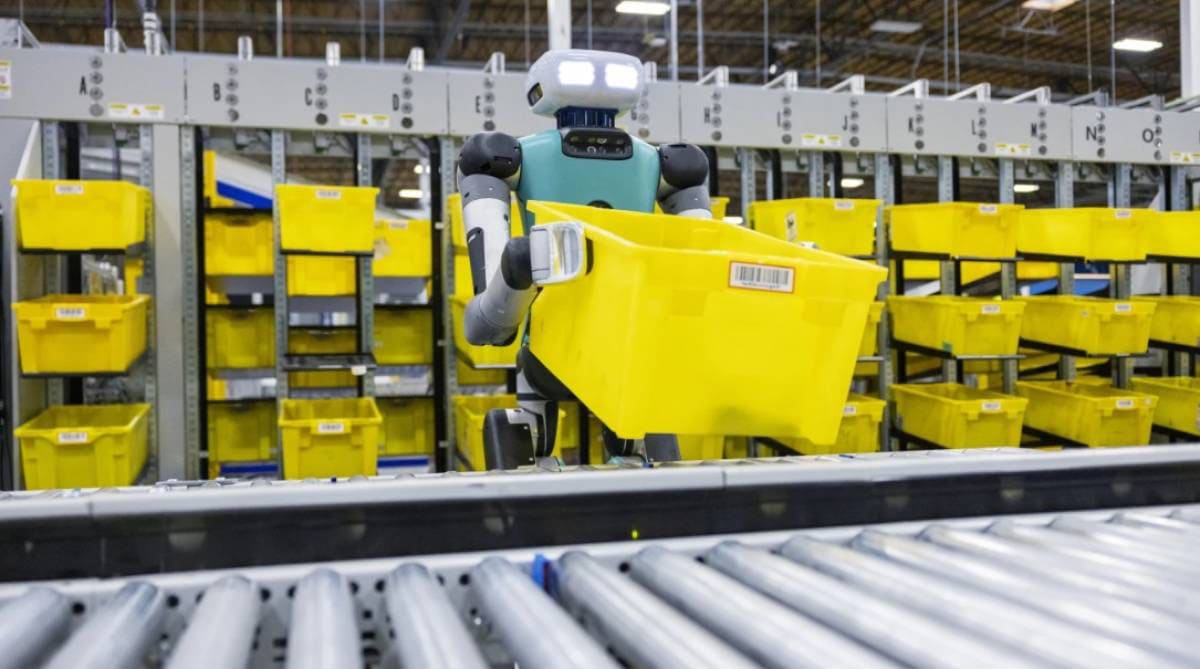Jakarta, July 4, 2025 – Amazon, the e-commerce giant from the United States, has once again made headlines in the world of logistics and technology. The company has officially announced the deployment of over 1 million robots across its global warehouse facilities—almost matching its total human workforce of approximately 1.56 million people.
This milestone marks a significant acceleration of the Industry 4.0 revolution in global distribution and logistics. However, behind this technological achievement lies a growing concern over the fate of human workers whose roles are increasingly being replaced by automation.
Operational Transformation: From Human Labor to Robotics
Amazon’s robots are far more than just basic transport machines. The company operates various sophisticated systems such as Hercules—a heavy-lifting robot capable of carrying up to 567 kg, and Proteus, an autonomous mobile robot that can transport loads of around 400 kg while navigating independently within warehouses.
In addition to hardware, Amazon introduced a generative AI system called DeepFleet, which optimizes robot fleet routing inside facilities, reducing travel time by up to 10% and significantly improving operational efficiency.
As a result, in the past decade, warehouse worker productivity has increased dramatically. In 2015, a typical Amazon warehouse employee handled around 175 packages annually. Today, that number has soared to 3,870 packages per year.
Higher Efficiency, Widespread Layoffs
However, this efficiency surge comes at a cost. Amazon has laid off over 27,000 employees between 2022 and 2023. The average number of human workers per facility has also declined, reaching its lowest point in 16 years—just around 670 people per warehouse.
Despite this, Amazon denies that robots are directly replacing humans. The company claims that automation helps reduce the physical burden on workers and creates new jobs in technical fields, such as system reliability, maintenance, and software or AI development. In its newest facility in Louisiana, for example, staffing has actually increased by 30% in those areas.
Additional Data: Health Risks and Global Trends
On the other hand, a 2023 study by the University of Illinois – Chicago (UIC) revealed that 41% of Amazon warehouse workers had suffered work-related injuries, and 69% of those had to take unpaid leave due to pain or exhaustion. This indicates that, despite automation improvements, occupational health and safety challenges remain unsolved.
Amazon’s case is also part of a larger global trend. A report by the International Federation of Robotics (IFR) noted that the global market value for industrial robot installations reached US$16.5 billion in 2024. Robotics adoption is expanding across various sectors, including manufacturing, healthcare, and food services.
Furthermore, a World Economic Forum (WEF) survey from 2025 found that 48% of companies in the United States plan to reduce their workforce due to generative AI adoption. This suggests that automation is becoming a central strategy for companies facing labor shortages and rising operational costs.
Solutions and the Future of Human Labor
To address this shift, Amazon has launched multiple upskilling programs, training over 700,000 employees to adapt to the digital era. These initiatives aim to reposition workers into higher-value roles that cannot be easily replaced by machines.
Still, not all workers can adapt quickly. Governments, educational institutions, and the private sector must collaborate to develop responsive training and education systems aligned with evolving labor market demands.
Conclusion
Amazon’s adoption of one million robots illustrates the power of technology in driving industrial efficiency. Yet, behind the success lies real challenges for human workers—from job displacement and increased workload to safety and health concerns.
The future of global logistics and manufacturing will largely depend on how companies like Amazon manage the balance between technological efficiency and human workforce sustainability. This is not just about replacing people with machines—but about building new forms of collaboration between humans and technology.



